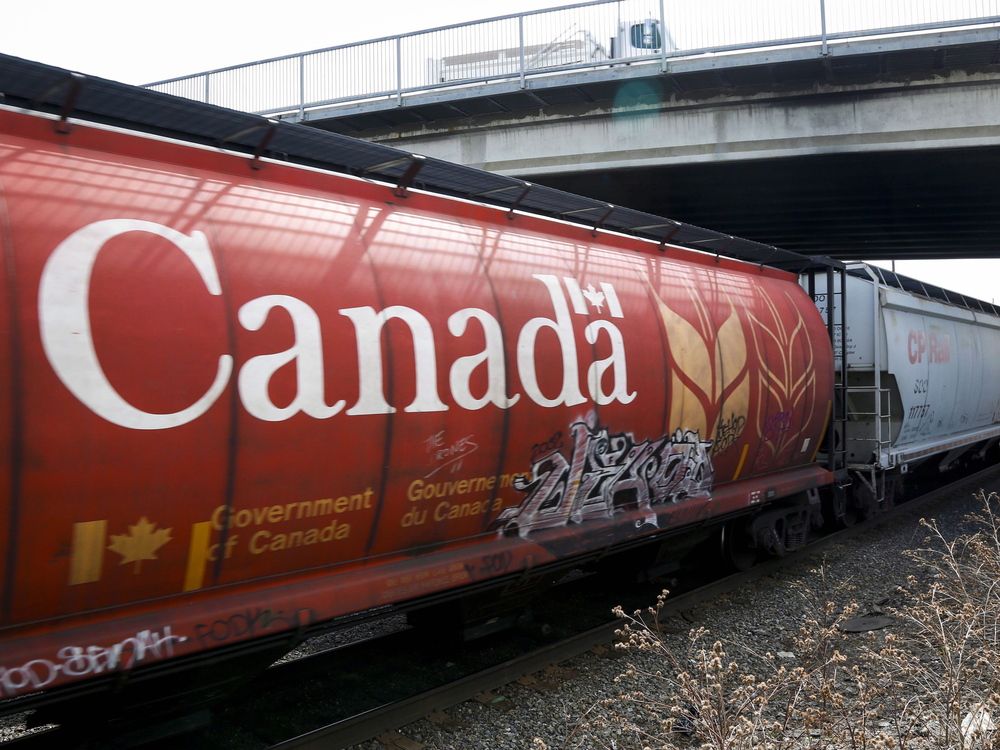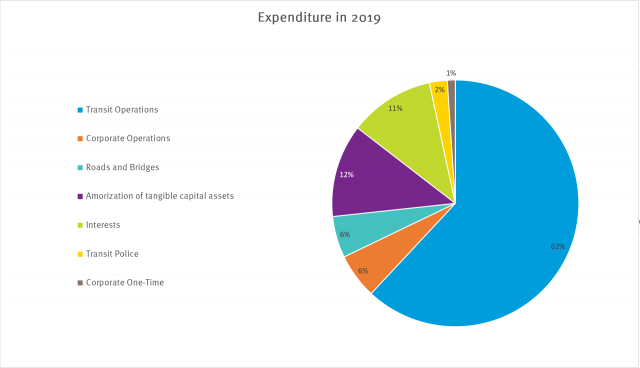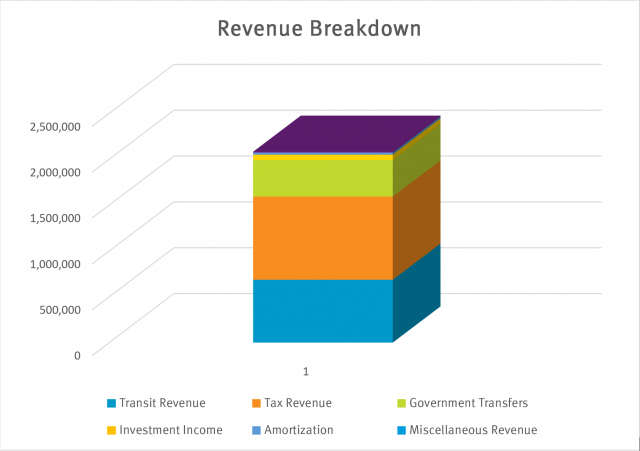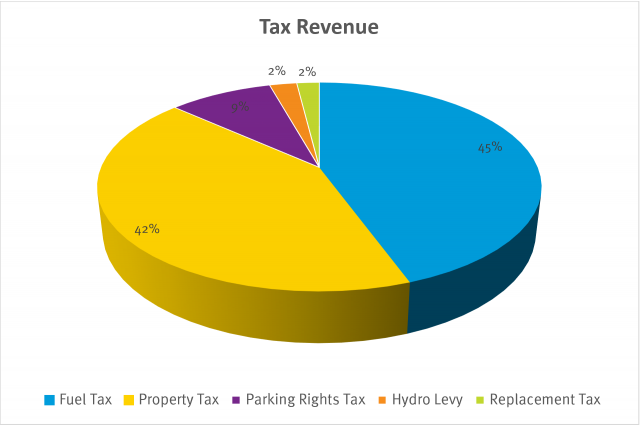How transit is accounted for versus roads makes it (somewhat) hard to compare; equally, transit projects and costs don't generally seem to be presented in comparison to the entire cost of commuting (parking, gas, etc., on top of the actual road system). How to raise that tax revenue in a fair way is another question, but in an era of $100 million interchanges I'm less fussed about major price tags on rail networks. Ten Trans Canada/Mackenzie/Admirals interchanges and you've got the gold-plated option presented for Vancouver Island rail.
The departure from the office (assuming it actually sticks) will shift the passenger load, and should make cohabitation with freight more feasible if there's less of a morning/afternoon distortion. There's also something to be said for shifting large-volume routine truck traffic (locally: chip trucks, bulk petroleum products, some lumber) and intercity low-priority mixed freight (which is going to be broken out for delivery anyway, whether it gets there in a five-ton or a boxcar) off the road network, which will only happen if rail exists in realms below the transcontinental.
it would be best, I think, to treat transit as a public good, like education or healthcare, and figure out a funding model from there, rather than expecting it to break even: roads are a pit into which money is thrown, so treating road-replacement (and for that matter road load-reduction options like buses) differently doesn't really track. I'm paying $15ish a day for parking when I work in Victoria, and I think $15-$20 in gas, plus wear and tear: throw a few hundred more on my tax bill if it means I won't need to do that any more and get to nap on the way in.
Noting the cost of labour, I would imagine that rail for the spinal parts of transit networks is cheaper to run (assuming you're not running into crazed protectionist must-have-conductors nonsense, or rubbish equipment) than buses, and likely more reliable (looking at you, Broadway and Hastings "express" routes).
Electrification of personal travel is also simplest on rail.
And upgrade our 19th Century era rail infrastructure while destroying, for once and for all, the nationally self-immolating railway monopoly:
The very Canadian problem at the heart of our supply chain woes
Two railways rule the country. Is it time for more competition?
A wooden bridge burned down one morning this month on a rail line in northwestern Alberta, near an S-shaped bend in the Smoky River about 100 kilometres south of Grande Prairie. An old resource road was a few kilometres away. From there, first responders had to use all-terrain vehicles to get to the site. They found water close by and extinguished the fire. But the bridge was “totally destroyed,” according to RCMP Cpl. Deanna Fontaine.
Neither RCMP nor Canadian National Railway Co., which has its own police force investigating the incident, will say who or what they believe caused the fire on Oct. 5. Whatever happened, it quickly became clear how much had been depending on that old bridge across a valley in the middle of nowhere
It was the worst time of year for that to be happening. A bumper grain harvest was just coming off the Prairies, global demand for grain was surging, and farmers were lining up to sell their new crop and generate some cash after some very lean months following last year’s drought.
On the morning after the fire, a grain elevator in Grande Prairie called Greg Sears, a farmer in nearby Sexsmith, Alta., and told him to hold off delivering 90 tonnes of canola for at least a few weeks on account of the rail shutdown.
“That’s $75,000 to $100,000 of product that I’m not going to get a cheque for any time soon,” he said.
For some in the industry, the bridge was proof of how easily things can fall apart in the Canadian
supply chain.
“The incident highlights the sector’s vulnerability to rail disruptions,” the credit rating agency DBRS Morningstar said in an Oct. 19 note about the fire. “What started out as a seemingly small disruption has the potential to snowball.”
Before the bridge, there was a washout in southern British Columbia that severed the main route into the Port of Vancouver for a week. Before that, it was the 2021
atmospheric rivers that choked off access to and from the British Columbia coast. And climate change likely will make it all worse — so much so that it probably won’t make sense to cram the Prairies’ entire bounty through a few “umbilical” rail lines in the Rockies, as one scholar put it in testimony at the House agriculture committee
last month.
“All of the food production in this enormous area the size of Europe is going through essentially a small number of rail lines and through a couple of passes,” said Evan Fraser, director of the Arrell Food Institute at the University of Guelph. “The system buckles. Every couple of years it buckles.”
Transport Minister Omar Alghabra’s
national supply chain task force, formed in the wake of Russia’s invasion of Ukraine, determined the country needs a Plan B. In a
report published earlier this month, the group gave 21 recommendations to help stabilize and unclog the supply chain, including a call for more investment to build “redundancies” and new backup routes for the most vulnerable choke points in trade corridors and border crossings.
“Failures could occur anywhere in the country: in the West by mountains, fire or weather; in Central Canada by floods; or in the East by winter storms, ice and washouts,” the report said.
The recommendations came with a stark warning: If the government does nothing, Canada’s reputation as a reliable trading partner on the world stage will falter and that would jeopardize our exports, which make up half of Canada’s gross domestic product.
John Heimbecker doesn’t give interviews that often. Top grain executives rarely do, and he is one of the industry’s most important executives, in charge of Winnipeg-based Parrish & Heimbecker Ltd., a network of grain elevators founded in 1909 that is now Canada’s largest flour miller and one of its largest grain exporters.
Heimbecker agreed to speak because for him, the talk of spending billions to protect the supply chain against burned bridges, sinkholes and floods doesn’t make sense. Those things aren’t what’s actually causing clogs and congestion, slowing down his grain shipments on their way to international clients, costing his business “enormous” amounts of money in late charges.
“Everybody wants to say, ‘Oh we need more capital. We’ve got to invest billions in the supply chain.’ Not true,” he said. “We move grain long distances, through mountains and over rivers. And look, there’s going to be a problem from time to time. But it’s not like a bridge is going out every two weeks and it’s not like landslides happen all the time.”
The remarks might come as a surprise to some in the industry, mostly because grain shippers in Canada aren’t known for being satisfied with the transportation system. One of the defining aspects of the grain business, especially lately, has been its relentless frustration with poor service from the railways. (In fact, Heimbecker made that quite clear: “I’ve got lots of problems with the railways, but they’ve spent massive amounts of money in the last 20 years upgrading the rail, their car fleets.” Then, for good measure: “And I’m no fan of the railway here.”)
Fixing the system, for Heimbecker, isn’t really about money. Sure, the infrastructure could use some investment. “And I have lots of ideas on how we could do that,” he said. “But I think the problem is complete mismanagement by the government. Our supply chain’s biggest problems emanate from ourselves.”
That’s a common gripe. Shippers have been particularly critical of the government for regulatory red tape that causes backlogs, including a rule on the B.C. coast, rarely observed at other international ports, that essentially prevents most grain ships from loading in the rain, which can waste a lot of time in a place as damp as Vancouver.
One of Heimbecker’s main critiques of the government, one that’s mostly absent from the task force’s recommendation, is that it’s been too soft on the two companies that control the rail system: CN and its long-time rival, Canadian Pacific Railway Ltd.
This harvest has become one of the most anticipated in recent memory, coming off the fields at a time when Canadian grain storages are empty following last year’s drought, food retail inflation is at a
41-year high and the war in Ukraine has cast a shadow of uncertainty around the global food supply.
So Canada’s grain exporters want to get the crops onto trains and into global markets as soon as possible, before Australia’s grain harvest enters the market in December and drives down prices, according to Wade Sobkowich, who leads the industry’s main lobby group, the Western Grain Elevator Association.
For months, CP and CN braced for the surge, bulking up their fleets with new grain hopper cars and trying to hire new staff.
But by the fall, CN started making excuses. In its annual
grain plan, the railway said it wouldn’t be able to keep pace with demand the last three months of 2022, in part because it wasn’t able to “hire and train all the conductors that we wanted” to have in place by harvest.
“One of the things that’s lost in this is, during the pandemic, both railways really downsized. They got rid of a number of people,” UBC’s Gillen said. “And now that demand is just growing like crazy, they don’t have the crews.”
The railways appeared to start falling behind in September. A collection of grain industry lobby groups known as the Ag Transport Coalition
tracks how many grain cars are ordered and how many the railways actually provide on a weekly basis. During the week of Sept. 18, CN and CP only provided about 70 per cent of all grain cars ordered by elevators in the week of Sept. 18, marking a “significant decline” from 83 per cent the previous week and well below “the 90 per cent threshold,” according to the coalition.
“This is the heavy shipping period and they’re already behind. And you know, once you get behind, it’s very hard to catch up,” Heimbecker said on Oct. 7. “It’s more or less the same story every year.”
Through October, however, new reports and comments started to emerge, showing the railways have started to turn it around.
“We’re facing a bumper crop. We’ve got a lot of expectations. We’re going to meet expectations,” CP chief executive Keith Creel said during an earnings update on Oct. 26, adding that the railway had hired 1,500 conductors since the start of the year. “We’ve never been in better shape. Now, listen, I don’t want to get arrogant here at all. Mother Nature can humble us tomorrow. That’s a tough railroad to operate in. But I’m very, very pleased.”
Fill rates improved consistently through September, hitting 86-per-cent fulfilment by the
first week of October.
In that week, CP sent “the most hopper cars to western Canadian elevators in its history,” spokesperson Salem Woodrow said in an email earlier this month.
And this week, CN sent out a news release boasting that it had shattered an internal record on grain shipments. During the week of Oct. 17, CN moved over 806,000 tonnes of grain, beating a previous record by over 50,000 metric tonnes. “This record also comes on the heels of CN’s second best September ever for grain movement from Western Canada, with over 2.64 million metric tonnes moved,” the company
said.
Sobkowich, the grain lobbyist, said he welcomed the new record, then added: “Even an amateur golfer is known to hit a hole in one once in a while … What turns that golfer into a pro is hitting good shots consistently.
CN has been vocal about the grain industry’s unrealistic demands on its network during the harvest this year. David Przednowek, who heads CN’s grain unit, said last month that CN will be able to move this year’s grain harvest, but shipments need to be spread out over the crop year, which runs from Aug. 1, 2022 to July 31, 2023.
The railway is only one part of an interconnected supply chain, so it’s impacted by things outside its control, like weather and delays at port terminals, he said. If the industry wants to move the bulk of the harvest in the span of a few weeks, all through the same corridor through the Rockies, “it’s not going to fit,” Przednowek said in an
interview last month. “There’s a limit to how much the supply chain can handle.”
That isn’t much comfort to John Heimbecker in Winnipeg.
“The harvest slot — October, November, December, January — this is when customers of Canada want the grain. That’s when we supply it,” he said. And if he doesn’t, he loses revenue and gets slapped with penalties for late deliveries.
“Those costs are massive. They’re enormous,” he said. “If I don’t deliver my grain to (Japanese trading giant) Mitsui, I’ve got to pay,” Heimbecker continued. “If the railways are held accountable, they’ll perform.”
Most deals between grain elevators and the railways also involve penalties. The railroad agrees to send an elevator a certain amount of cars, and the elevator agrees to use them. If one side doesn’t hold up its end, there’s a cost for that.
To add an extra layer of fairness, the federal government allows shippers to take the railways to binding arbitration if they don’t like the deal.
In statements for this story, both CN and CP pointed to this system as proof that they are held accountable for the level of service they provide to shippers. Heimbecker said the federal protection has helped, but it’s not enough.
“It’s not that the railways can’t move the grain. It’s that they won’t move it,” Heimbecker said. “And they won’t do it because they pick and choose. They pick the highest margin products to move at the time.”
Grain isn’t the most lucrative commodity the railways move. According to CN’s
latest quarterly update, the “grain and fertilizers” category earned $5.20 for every ton shipped a single mile. Petroleum earned $7.26 per ton per mile in the third quarter. Metals and minerals fetched $7.24, forestry products made $8.32, and coal earned $4.47.
Sobkowich made a similar allegation earlier in the harvest, accusing the rail companies of reallocating resources to take advantage of a recent surge in coal shipments. “CP shows no preference to coal or, for that matter, any specific commodity,” CP spokesperson Salem Woodrow
said last month. CN went even further, explaining that siphoning resources from grain shipments to another commodity wouldn’t make sense, because they use different types of rail cars, different routes and different crews.
Przednowek, CN’s assistant vice-president for grain, said crews are based in one place, and only work on a short stretch of a rail line, so it isn’t as simple as moving a crew from one commodity, in one region, to another commodity somewhere else.
“It is absolutely not accurate to say, ‘Well we’re just moving a bunch of people from here over here to move a bunch of coal,’” he said. “That’s not the case at all. That is not how things work.”
Gillen, the director of UBC’s Centre for Transportation Studies, said this is a case where both sides are right and wrong at the same time. It’s true that switching over cars and assets to ship one commodity to another is a cumbersome process, but not impossible.
“It’s absolutely true that if you have a valuable commodity and you’re making more money on it, then why wouldn’t you want to do something like that?” he said. “If the grain companies want to pay more money in order to, in a sense, bid for that capacity, fair enough.”
The federal government, however, puts a cap on the amount of money that CN and CP can make from transporting western grain to provide some price protection for shippers — a program known as the
maximum revenue entitlement.
“When you cap the revenue that can be earned from a service the incentives are to shift use of your capacity elsewhere,” Gillen added in an email.
Sobkowich and the grain elevators argue that they’re also at a disadvantage when negotiating with railways, since they can’t afford to go through the long and cumbersome federal arbitration process. If a grain elevator opted to contest a contract because they wanted the railway to send more railcars, for example, they would have to wait six months to a year for arbitration, he said. During that time, they’d have no contract and instead would have to vie for leftover after the railway fulfilled its contractual obligations to competing grain elevators, according to Sobkowich.
“Well, you’ve lost the harvest,” he said.
On top of that, arbitration can cost as much as $1 million in legal fees, according to Gillen.
But all the talk of lengthening interswitches, or making federal protections easier to access, ignores one of the more radical options when it comes to making the railways more competitive. That, Gillen said, would involve expanding access for third-party railroads to rent CN and CP tracks — something known as “running rights,” which are common in Australia and Europe.
A top grain exporter says Canada has been too soft on the two companies that control the rail system: CN and CP Rail. Read more.

financialpost.com








